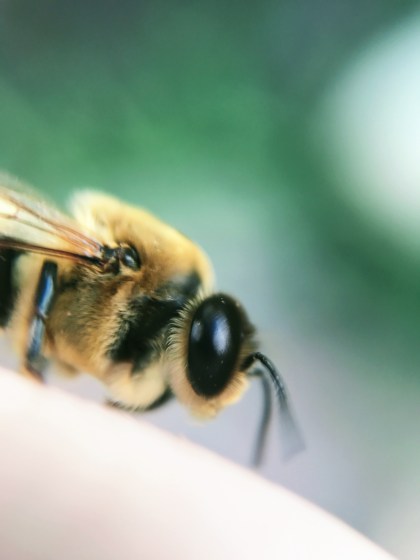Your cart is currently empty!
Spring is the height of mating season for bees. A healthy hive emerges from the cold winter, builds up their population and has the drive to swarm and reproduce the colony. During this time, drone populations are high.
A drone is a male bee that is produced from an unfertilized egg. The main, and arguably only, purpose of the drone in a bee community is to mate with the queen. They do not defend the hive, as they do not have stingers, nor do they feed the community since they do not have body parts to collect nectar. It is effortless to spot a drone bee due to its larger eyes that look like a helmet, their bigger bodies, and long wings.

Drones produce a pheromone that attracts other drones flying in close range. This leads to the formation of drone congregation area (DCA). The diameter of DCA ranges from 30-200 meters and is always 15-40 meters above the ground. The DCA is selectively chosen to make it suitable for the drone to mate with virgin queens. For genetic diversity, one queen normally mates with up to 10-20 drones. There is always a competition among the drones in the fight to mate with the queen. The success of the drone to mate the queen depends on its speed and vision, which explains reason behind the bigger drone eyes.
Drone mandibular glands that secrete the pheromone are much smaller compared to those of the queen and the worker’s bees. The size of the glands also depends on the age of the drone. As soon as the drones are born, the secretory activity increases up to the third day. After the third day, the secretion process is constant up to the seventh. These glands, however, become inactive after nine days.
Similar to workers, drones show features that determine their acceptance in the bee colony. These features depend on their age and whether they belong to the colony or not. Mostly young drones of 7 days old are cleaned and fed by workers. On the other hand, old and sexually mature drones (usually average age of 23 days) are attacked, rejected and kicked out of the hive. The worker bees do this by starving the drones to weaken them after which they escort them to the hive exit and throw them out of the hive. The workers use chemical signals (pheromones) on the drone surface to distinguish drones of different ages.
Besides, drones always undergo nest mate recognition process at the hive entrance. This shows the presence of a similar recognition mechanism based on a cuticular pheromonal signal. The cuticular profile is sex-specific, making the worker bees distinguish between sexes using chemical cues.
Since bees use scents to communicate, the drone’s scent is easily identified to the other bees. Pheromonal communication happens throughout the hive and there are ranging scents for queens, brood, alarms, and all the other important aspects of the hive.


Leave a Reply